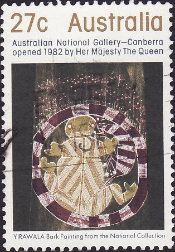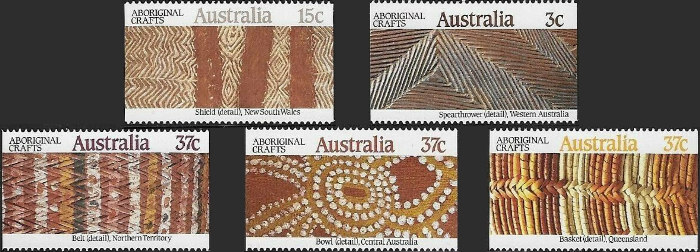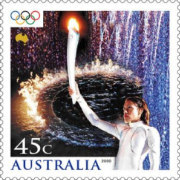History
Timeline results for 1400 to 2020
Found 49 results for your search. Showing page 1 of 3.
Year from 1400, year to 2020, month is October
1830
-
Governor Arthur tries unsuccessfully to drive all the remaining Aboriginal people in eastern Australia on to the Tasman Peninsula. 2,200 settlers, military, police and convicts form a ‘Black Line’. It was the largest force assembled against Aboriginal people anywhere in Australia and cost 5,000 pounds (equivalent to about AUD 1.2 million in 2008) and only two Aboriginal people are caught – an old man and a young boy.
1834
-
Governor Stirling leads a party of men to a site near present day Pinjarra, on the Swan River and attacks 80 Aboriginal people. One of Stirling’s men dies and many Aboriginal people are killed. Official reports put their number at 14 but Aboriginal accounts suggest a whole clan was wiped out in the attack. This became known as the ‘Battle of Pinjarra’. It was an attempt to punish Aboriginal people south of Perth, after conflict with settlers caused the death of a settler in April.
1835
-
John Batman attempts to make a ‘treaty’ with Aboriginal people for Port Phillip Bay, near present day Melbourne by ‘buying’ 243,000 hectares with 20 pairs of blankets, 30 tomahawks, various other articles and a yearly tribute. Governor Bourke does not recognise the ‘treaty’ and the purchase is voided. This is the only time colonists attempt to sign a treaty for land with Aboriginal owners.
1922
-
Sturt Massacre in the Kimberley: A police party is searching for an Aboriginal man named Banjo, who was thought to have murdered pastoralists Joseph Condren and Tim O’Sullivan. They shoot at a group of Aboriginal people near Sturt Creek, and when the ammunition runs out, they chain up Aboriginal men, women and children and march them to the old Denison Downs homestead where they shoot and burn them. [1]
1972
-
1,000 Aboriginal people sign the Larrakia petition, one of the most important documents in the history of their struggle for land rights. Headed Gwalwa Daraniki, which means ‘our land’ in the language of the Larrakia people (the traditional owners of the Darwin area in the NT), the Larrakia petition called for land rights and political representation for the Aboriginal people of Australia.
1977
-
More than 200 Aboriginal people meet at the Black Theatre in Redfern and form the NSW Aboriginal Land Council (NSWALC) as an independent, non-statutory organisation and lobby for Aboriginal land rights. Chaired by freedom fighter, Kevin Cook, it demands the abolition of the Aboriginal Lands Trust and begins to lodge land claims.
1981
-
The Minister for Aboriginal Affairs, Mr. Peter Baume, writes to the then Chairperson of the National Aboriginal Conference, Mr. Bill Bird, in response to a letter advising him of the 27 items that had emerged as a preliminary list of matters that were being considered for inclusion in the Makarrata/treaty.
1982
-
Queensland Aboriginal people protest at the Commonwealth Games.
-

The stamp shows Gurgurr the Moon man, and his dog Mulutji. Australia Post issues a stamp commemorating the opening of the National Gallery, Canberra. The design shows an Aboriginal bark painting of Gurgurr the Moon man, and his dog Mulutji as they appear on the moon. The artist is not mentioned.
1986
-
The Queensland government pays equal wages to Aboriginal workers on missions.
1987
-
Australia Post issues a set of 5 stamps with details of Aboriginal crafts. The stamps show patterns on a basket (from Arukun, QLD; 37c), a spear thrower (Warburton River, WA; 3c), a bowl (Pintubi people of Central Australia; 37c); a belt (Arnhem Land, NT; 37c) and a shield (New South Wales; 15c).

Aboriginal people used ochres and grasses of different colours to create the patters seen in their craft.
1995
-
The Reserve Bank of Australia issues the $50 polymer banknote showing David Unaipon, a Ngarrindjeri writer, preacher, inventor and advocate for his people, on the front. The banknote features drawings of his innovative mechanical hand-piece for shearing sheep, an extract of the preface of his book Legendary Tales of the Australian Aborigines, and the mission church in Raukkan (Point McLeay Mission), South Australia, the community where he was born. [2]
1999
-
Jimmy Little is inducted into the Hall of Fame of the Australian Recording Industry Association (ARIA) Music Awards.
2000
-

The 45c stamp featured Cathy Freeman holding the Olympic torch. This stamp issue features Cathy Freeman lighting the Olympic Flame at the opening ceremony of the XXVII (27th) Olympic Games in Sydney. The stamp was voted the most popular in the 2000 Australia Post Stamp Poll.
2004
-

Skull of an indigenous person (Andaman Islands). Many Indigenous remains like these are still held in museums all over the world. Lack of cultural sensitivity or museum personnel impede their examination and return. Museum of Ethnography, Stockholm, Sweden sends back 20 Aboriginal skeletons it had collected in 1910-11 from the Kimberley, Western Australia [3], the first voluntary repatriation undertaken by a major European museum [4].
2006
-
The first Stolen Generations compensation scheme in Australia is set up in Tasmania by the Stolen Generations of Aboriginal Children Act 2006 (Tas).
2007
-
Museum of Ethnography, Stockholm, Sweden returns 10 Aboriginal remains which were taken from graves in the Kimberley region of Western Australia by a Swedish archaeological expedition in 1910 and 1911 [5].
There was this idea at the time that Aboriginal Australians were like human fossils, of a kind that had survived longer in Australia than elsewhere.
— Anders Björklund, director Ethnographical Museum, Stockholm, Sweden, explaining why Aboriginal remains were taken [6] -
A Stolen Generations memorial is opened at Mt Annan near Campbelltown, Western Sydney. The memorial, designed by Aboriginal artist Badger Bates from Wilcannia, features original forest, boardwalks and interpretive signs.
2008
-
The Northern Territory Emergency Response Review Board provides independent review of the first 12 months of the NT Intervention to the Australian government.
-
The Devils Marbles (Karlu Karlu) site in the Northern Territory is handed back to traditional owners after a 28-year native title battle. Its owners consider Karlu Karlu as one of the most significant sacred sites.
References
View article sources (6)
[1]
'Aboriginal massacre sites uncovered in first forensic science study', ABC News 1/10/2017
[2]
'First Nations Peoples and Australian Banknotes - Innovation', Reserve Bank of Australia Museum, available at museum.rba.gov.au/exhibitions/first-nations-peoples-and-australian-banknotes/innovation/
[3]
'Aboriginal remains home from Sweden', National Museum of Australia, 6/10/2004, www.nma.gov.au/media/media_releases_by_year/2004/2004_10_06
[4]
'Putting it right', Koori Mail 466 p.43f
[5]
'Sweden to return Aboriginal remains to Australia', ABC, 19/10/2007, www.abc.net.au/news/stories/2007/10/19/2064893.htm
[6]
'Sweden to return Aboriginal remains to Australia' The Local, Sweden, 19/10/2007, www.thelocal.se/20071019/8844



.jpg)